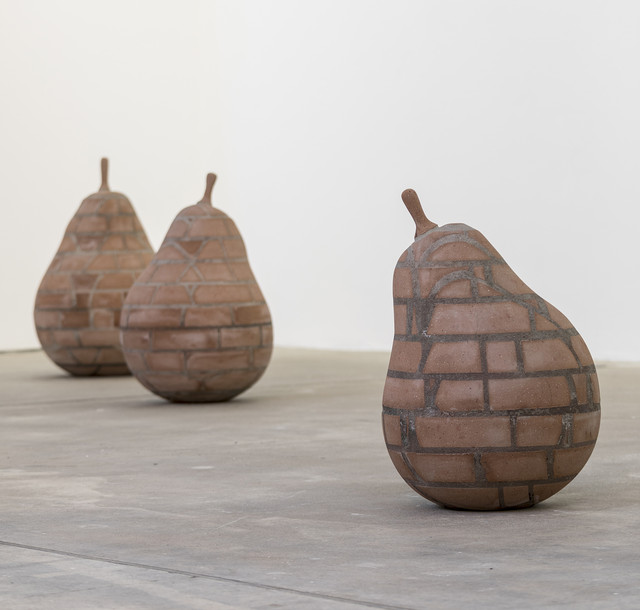Press Release
How do everyday objects, architecture and technology affect the human body, human behaviour and inter-

Judith Hopf, OUT
SMK National Gallery of Denmark, Copenhaguen (Denmark)
10.05 - 30.12.2018

Exhibition May 10 -

© ArtCatalyse International / Marika Prévosto 2018. All Rights Reserved
Judith Hopf, Birne, 2018. Installation view KW Institute for Contemporary Art, Berlin. Photo: Frank Sperling. Courtesy the artist and kaufmann repetto, Milan/New York, Deborah Schamoni, Munich, and Metro Pictures, New York.

Giant pears have been carved out of solid cubes built out of red bricks. The inherently illogical nature of producing pear-
Hopf often employs humour in her works, injecting it as a disarming factor within the overall critical reflections typical of her practice. Things are rarely as simple as you might think. And this also applies to the title of her exhibition at SMK: OUT.
Walking architecture
"'Out' is an interesting word because it can have positive or negative connotations. On the one hand, being deemed 'out' would be horrific within the world of fashion—and this applies within the world of art, too. No-
The exhibition includes the video work bearing the same name: OUT. In this video, Hopf makes a reference to the American architect John Hejduk. In the 1980s, Hejduk proposed the construction of a new neighbourhood along Friedrichstrasse on the western side of the Berlin Wall: Berlin Masque. The project was never realised, but in 1988 Hejduk had a fragment of the original plan built in the Kreuzberg area of the city in the form of the distinctive postmodernist building complex known as the Kreuzberg Tower and Wings.
The facades of the two side wings look like faces or masks: the windows are eyes lidded by awnings. At first, we are led to believe that Hopf filmed the actual building in Berlin. But when the house is seen to move in a later sequence, it turns out to be a scaled-
When man and technology merge
Made of bent sheet metal, the sculpture series Untitled (Laptop Men) emanate industrial functionality and at first glance appear to point towards the minimalist sculptures of the 1960s, which favoured industrially manufactured materials and non-
Hopf’s sculptures resemble their abstract predecessors, but closer inspection reveals that her sculptures actually depict seated, standing and reclining human figures that have merged with laptops propped onto their bellies, chests or knees.
Hopf takes an inquiring and critical look at the impact that technology has on the human body—for example at how laptops have almost become prosthetic extensions of the body, rendering us dependent on them. What does this do to individual human beings, and how has it affected our interaction with each other?
The exhibition Judith Hopf: OUT was produced in co-